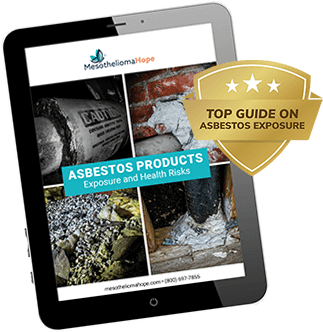History of Asbestos in Roofing
Roofing materials widely varied, as well. Flat roofs often chose tar with gravel stones while pitched roofs used layered asphalt shingles. Regardless of roof style, almost all petroleum-based roofing materials once contained deadly asbestos fibers.
Asbestos took off as a choice roofing product in the early 1900s. However, inventors began experimenting with adding asbestos to cement and asphalt in the late 1800s.
Initial roofing products had severe issues. Wood shakes were highly flammable. So were bare asphalt shingles. Concrete tile roofing products were cumbersome and metal rusted out.
In 1893, a European chemist filed the first patent for asbestos cement roofing shingles. He called it “Eternit” after the Latin term for everlasting.
By 1907, asbestos became a prime roofing material additive for making shingles based on an asbestos-asphalt blend. Shingle factories sprang up across the States. For the next seven decades, asbestos roofing products covered America.
Asbestos Use in Roofing Products
It seemed good business sense to add asbestos to roofing products—for practical reasons, that was.
First, adding 15-20% asbestos fibers into the petroleum asphalt mixture cured the fire problem.
Shingles containing asbestos were inflammable, and that was highly popular with civic planners and insurance companies.
Using asbestos in roofing had many other advantages:
- It was lightweight. That solved structural issues for heavy roof loads.
- Asbestos particles made asphalt-based roofing durable and long-lasting.
- Asbestos wouldn’t rot, rust, conduct electricity, or react to heat.
- Asbestos was easy to work with, widely sourced, and low-cost to purchase.
Builders across the country heartily endorsed asbestos roofing as the best material on the market.
Shingles weren’t the only roof product containing asbestos materials. In fact, most other roofing products produced in the early to mid-twentieth century contained asbestos. It was a universal solution to roof concerns.
Asbestos fibers found their way into these roofing products:
- Roofing tar and asphalt liquids
- Roofing felt and underlayment
- Roofing caulking, mastic, and sealant
- Roofing cement and cement-based shingles
- Roof flashings and vents
- Roof flat-sheets and corrugated asbestos roofing
Roofing manufacturers blended two types of asbestos fibers into their products. Most common was chrysotile or white asbestos. The other kind was amphibole asbestos fibers.
There’s a distinct difference between the two. Another name for Chrysotile fibers is serpentine asbestos. Microscopically, they’re long and twisted with soft edges. Amphibole fibers were a group of asbestos particles or subclass. They’re crystalline with sharp, spiny structures and far more dangerous when inhaled.
The U.S. Environmental Protection Agency (EPA), along with the Occupational Safety & Health Administration (OSHA) was aware of how dangerous exposure to airborne asbestos fibers was to roofing product manufacturing employees and installation workers.
The 1989 Asbestos Ban and Phase Out Rule put an end to filling roofing products with deadly asbestos fibers that caused diseases like mesothelioma.
Mesothelioma from Roofing Asbestos Exposure
Thousands of American workers suffered from mesothelioma after being exposed to airborne asbestos fibers when working with roofing products containing asbestos.
Many currently have the disease or are in the development process because there’s a 10 to 50 year latency period before asbestos fiber exposure turns cancerous.
Some of the affected workers exposed to roofing product are:
- Roofing material factory employees who manufactured products.
- Shippers and warehouses who handled asbestos roofing materials.
- Builders and contractors who installed asbestos products.
- Renovators and demolition specialists who removed asbestos roofing.
- Anyone working independently where asbestos fibers became airborne.
When workers inhaled asbestos fibers, the microscopic particles embedded into the lung lining or what’s called the mesothelium.
Asbestos fibers impale the mesothelium, and an exposed worker cannot exhale them. They stayed in the mesothelium forever and became abrasive or irritant. That was especially so with amphibole asbestos fibers.
Over time, scar tissue formed around these tiny asbestos particles and eventually become cancerous tumors called mesothelioma.
The only cause of mesothelioma is exposure to asbestos fibers. The risk of developing mesothelioma depended on the type of asbestos, the amount of exposure, and the time the person was exposed.
Compensation for Mesothelioma Victims
Although there’s no cure for advanced mesothelioma cases, victims can claim for compensation.
Claims are filed against negligent asbestos product suppliers to compensate income loss, medical expenses, and personal injury suffering. Families can sue on behalf of mesothelioma victims. They can also file mesothelioma lawsuits in wrongful death cases.



